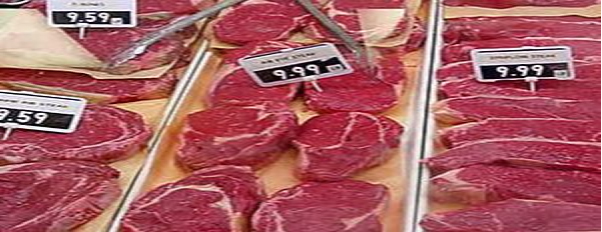In the competitive world of grocery retail, meat departments are under increasing pressure to balance quality, safety, presentation, and profit margins. One major challenge is product waste, especially with high-value perishable items like fresh meat. Fortunately, refrigerated meat fixtures, combined with advanced lighting and energy-efficient technologies, play a vital role in minimizing waste and maximizing shelf life.

At www.meat-display-fixtures.com, we specialize in solutions that address the root causes of meat spoilage while enhancing merchandising performance. In this blog, we’ll explore how Promolux LEDs and Econofrost night covers, when integrated into modern refrigerated meat fixtures, significantly reduce product waste and improve operational efficiency
Why Product Waste Is a Major Concern in Meat Departments
Meat is one of the most sensitive and expensive fresh products in grocery retail. Poor temperature control, light exposure, and oxidation can lead to:
- Discoloration (graying or browning)
- Loss of moisture and texture
- Off-odors and flavor degradation
- Reduced shelf life and unsellable inventory
These issues not only impact sales but also contribute to high shrinkage rates, leading to thousands of dollars in lost revenue every month.
Temperature Stability: The First Line of Defense
Proper refrigeration fixtures are designed to maintain consistent temperatures, keeping meat at safe levels to inhibit bacterial growth. However, open refrigerated displays can lose cold air, especially overnight, causing fluctuations that degrade meat quality.
At www.meat-display-fixtures.com, we recommend pairing high-performance refrigerated cases with Econofrost night covers. These thermal aluminum night blinds are pulled down during non-operational hours, retaining cold air and reducing energy consumption by up to 36%. Lighting and Oxidation: The Hidden Culprit
Light is often an overlooked factor in meat degradation. Most traditional or even standard LED lights emit high levels of visible spectrum radiation, which causes photo and lipid oxidation—a process that breaks down fat and protein, leading to discoloration, unpleasant odors, and reduced freshness.
Promolux food-safe LED lighting is designed specifically to address this issue. Promolux LEDs emit lower and less harmful radiation and use SafeSpectrum® technology to minimize oxidative damage. The result? Meat retains its natural red color, texture, and appeal for a longer period.
CPI vs. CRI: Promolux Sets a New Standard
Unlike regular LEDs that focus on CRI (Color Rendering Index), Promolux lighting uses CPI (Color Preference Index)—a superior metric for food merchandising. CPI measures how appealing and true-to-life food colors appear to the human eye.
By using Promolux LEDs in meat display fixtures, stores can reduce waste while improving the visual presentation of their products, boosting customer confidence, and increasing sales conversions.
CPI vs. CRI: Promolux Sets a New Standard
Unlike regular LEDs that focus on CRI (Color Rendering Index), Promolux lighting uses CPI (Color Preference Index)—a superior metric for food merchandising. CPI measures how appealing and true-to-life food colors appear to the human eye.
By using Promolux LEDs in meat display fixtures, stores can reduce waste while improving the visual presentation of their products, boosting customer confidence, and increasing sales conversions.
Reducing Waste Means Increasing Profit
Every pound of spoiled meat is a direct loss for the retailer. But when stores use refrigerated meat fixtures equipped with Econofrost night covers and Promolux LEDs, they gain:
- Extended product shelf life
- Lower shrinkage and throw-away rates
- Consistent meat color and texture
- Reduced maintenance and energy costs
- Improved food safety and compliance
Together, these technologies help meat departments run more efficiently and profitably, while supporting sustainability initiatives by reducing food waste.
